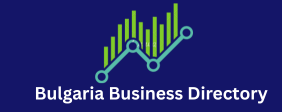There’s nothing in the digital world that generates more speculation than the use of hashtags on social media. Absolutely kuwait telegram data nothing. Every user has their own theories about the best way to leverage hashtags to achieve greater visibility and improve engagement. Ultimately, everyone has an opinion and a recipe for using them correctly. We don’t want to get caught up in that. kind of discussion because we prefer to review them. And find opportunities and ideas in each of these speculations.
We want to start by stating that there’s no single formula for using. Hashtags and getting the most out of them—in fact, nothing in the digital world does. Combining variables, experimenting, and learning from all the changes is what will truly bring us closer to the result.
A brief historical review of hashtags to put them into context
Social media hashtags were originally created as a mechanism. For organizing and classifying content; they enabled users to find, catalog, and follow any stream of content flowing within a digital platform. As a tool, they were first used in 1978 within the C programming language—a general-purpose language developed by Dennis Ritchie between 1969 and 1972 at Bell Labs. Years later, in the late 1980s, they were incorporat into the instant messaging service IRC (Internet Chat Relay), where people used them to categorize groups and topics. what is multi-channel marketing? the most effective multi-channel marketing solution
This categorization system would have been forgotten if Chris Medina hadn’t found a use for it on social media. On August 23, 2007, this Google employee proposed using the pound sign (#) preceding a word to label and group posts. Initially, the idea didn’t resonate in the digital ecosystem, but this quickly changed during an emergency in San Diego, California. There, Nate Ritter, a resident of this town, covered the events of the October 2007 fire via Twitter. He used the hashtag #SanDiegoFire in all his posts. Many people followed the hashtag to document the incident and contributed new information. It was at that moment that the potential of this tool became apparent.
. This led to the widespread adoption of the concept and its popularization. Furthermore, the social network’s developers made a second move that catapulted the hashtags to success: they created trending topics and allowed them to be included in this trending ranking .
How to use hashtags on Instagram as a marketing tool
Now that we know their origins and early uses, we can move forward in the direction that interests us: when was they seen as an chine directory opportunity to incorporate them into marketing actions ? Basically, from the moment Twitter used them as a tool to measure the pulse of audiences’ current interests.
Today, hashtags are one of the best ways available on social media to gain visibility, reach, and chine directory relevance. And these are precisely the three goals most pursued by businesses on social media. The first brand to realize the commercial potential of hashtags was Audi, when it included a hashtag in its Super Bowl commercial—in January 2011 —that allowed them to generate, monitor, and store a stream of comments about their vehicles. With this strategy—designed by the digital agency Offerpop—many organizations realized the social impact of a hashtag and the high levels of influence they achieve in communities.
Since then, many people and companies have incorporated hashtags into their daily marketing efforts , hoping to impr

